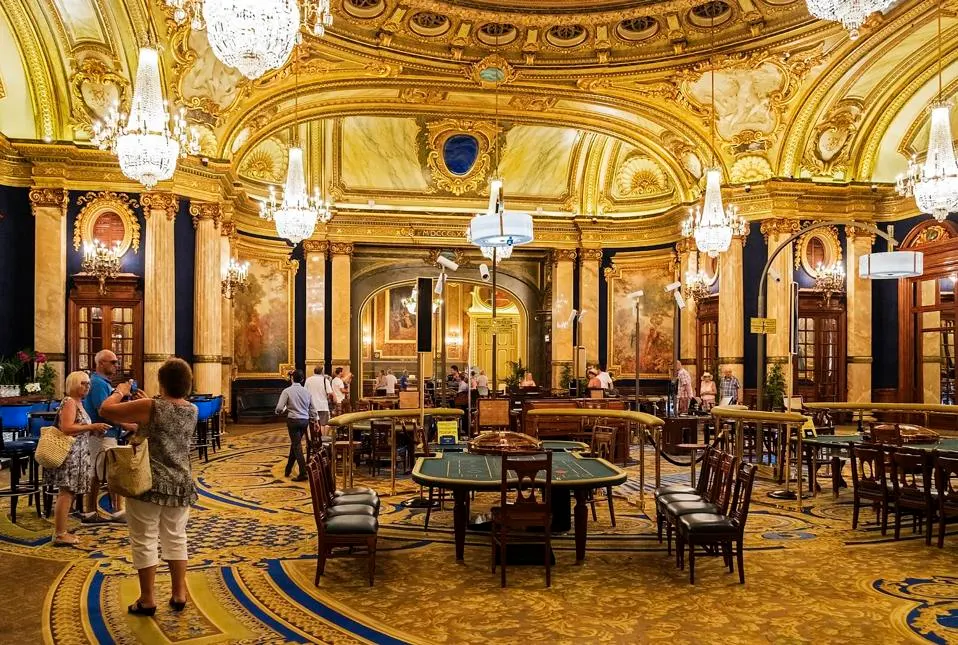
New is not always better. Sometimes, the nostalgia and the prestige associated with classical establishments work together to bestow an unmatched gravitas that the panache of newer entrants just can’t hope to outcompete. Look no further than some of the oldest casinos in the world, where the clinking of wineglasses, while seated on faded armchairs, evokes scenes of a bygone era long lost to the sands of time.
While most believe that modern-day casinos originated in Italy in the 17th century, the roots of such establishments extend much farther - to ancient China, in fact.
Of course, the Ridotto is widely considered the first casino built as per our contemporary understanding of what constitutes a gambling-focused establishment. While casinos and gambling clubs were all the rage in Victorian England, by the turn of the 20th century, the new world had effectively stolen the limelight from their European counterparts.
Nevada legalized gambling in 1931, paving the way for the Las Vegas Strip, which has now become synonymous with the word casino, hosting iconic gambling establishments such as the El Rancho Vegas, the Flamingo, and the Stardust.
While Macau in Asia and Monaco in Europe have now established themselves as regional gambling hubs, the indisputable reigning monarch in this arena continues to be Nevada’s Las Vegas city.
In today’s listicle, we’ll explore some of the oldest and most prestigious casinos in the world that continue to stand in defiance of the ravages of time.

The Ridotto is widely considered the first formal gambling-focused establishment in the world. In 1638, the Great Council of Venice sanctioned the conversion of a part of Palazzo Dandolo into a government-sanctioned casino.
While the Ridotto allowed entry to everyone, its high-stakes gambling style and the enforcement of a strict dress code meant that only wealthy clients could afford to partake of its delights.
After serving its clients for well over a century, the Ridotto was officially shut down in 1774 following a targeted campaign by Giorgio Pisani, a reformer who believed the step was necessary to “preserve the piety” of Venetians.

Established in the same year as the Ridotto, Casino di Venezia was originally a theater with a section reserved for gambling. The casino was officially commissioned as Ca’ Vendramin Calergi when betting became legal in Venice in 1638.
Eventually, the casino became a home to Italian nobility. Thereafter, it entered the possession of the German music composer Richard Wagner. Venice re-acquired the property in 1946 and re-opened it as a casino in 1959.
Based on Renaissance architecture and replete with intricately designed doors and chandeliers, Casino di Venezia is a well-preserved architectural marvel, and its lone restaurant, the Wagner, is renowned for its culinary delights.

Casino de Spa in Belgium can trace its origins to the year 1763 when the Prince Bishop convinced the authorities to dedicate an establishment for gambling. Initially named Redoubt, the casino’s croupiers soon became famous for their skill and expertise, so much so that they were invited to teach the game handlers at the Casino de Monaco in the 19th century.
Casino de Spa currently boasts around one hundred slot machines. The establishment offers not only traditional games like roulette and blackjack but also more contemporary ones like poker.

Casino Wiesbaden is one of the oldest and most prestigious casinos in Germany. Opened in 1777, the casino draws liberal inspiration from the neoclassical architecture.
The iconic German casino offers roulette, blackjack, and poker and boasts 190 slot machines. The clients can satisfy their culinary cravings by dining at the Lambertus restaurant or indulging in the spirit of their choice at the K1 bar.

As Europe's “summer capital” in the 19th century, the city’s Casino Baden-Baden holds a prominent place among the continent’s gambling-related establishments.
The casino traces its roots to 1874 and is liberally populated with baroque embellishments. Clients can avail of diverse games at the casino’s tables, where roulette, blackjack, poker, and punto banco are all offered. The patrons can head to the Bernstein Club if a more private setting is desired.

Monaco is sometimes referred to as the playground of the rich. Casino de Monte Carlo is the beating heart of Monaco’s glitterati.
The casino was originally established in 1863 by Prince Charles III. Currently, the establishment is managed by the Société des Bains de Mer (SBM), a company in which Monaco’s ruling family holds a significant stake.
Gamblers can play roulette, baccarat, blackjack, and poker in the casino while soaking in the luxurious ambiance.

While the Golden Gate Casino traces its roots all the way back to a humble two-story structure in Nevada in 1906, it was only in 1974 that the entire establishment was named the Golden Gate Hotel and Casino.
The establishment is considered a gaming pioneer in the region, offering a myriad of attractions and amenities, including dealers that dance and a dedicated credit program.

Viña del Mar, or the Vinyard of the Sea, is a commune on Chile’s coast. The Enjoy Viña del Mar Casino opened its doors to the public in 1930 as part of the government of Chile’s efforts to boost tourism.
The establishment is a riot of scenic gardens and imposing architecture. The casino currently boasts around 1,500 slot machines.

Casino Lisboa opened as part of the Hotel Lisboa in Macau in 1970, becoming one of the earliest gambling-focused establishments in the region.
The casino has served as the screening backdrop in a number of James Bond movies, including Golden Eye and Casino Royale.

Wrest Point Casino is Australia’s first licensed gaming establishment. The casino opened in 1970 as the tallest building in Hobart.
Now considered a heritage site, the casino features a revolving restaurant, a vast array of gaming tables, and over 650 slot machines.